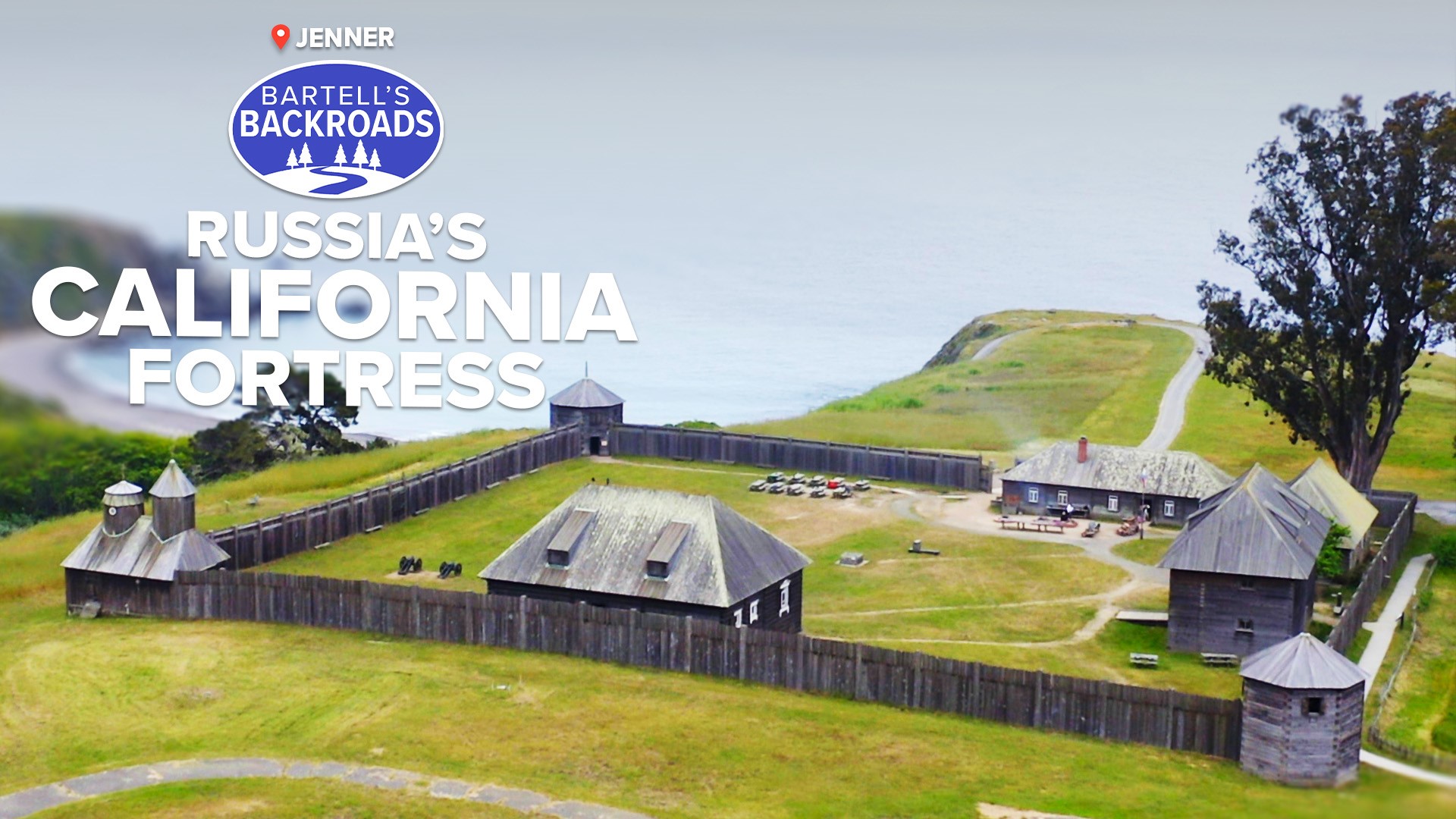FORT ROSS, Calif. — On a quiet coastal bluff in 1812, Native American tribes in Sonoma County watched as land-grabbing explorers built a mighty fortress equipped with large cannons. The wooden fortress became known as Fort Ross.
Today it is a state park but in the early 1800s it was a Russian settlement, and the Russians saw it as the boundary line between them and the encroaching Spanish empire. The land in this region had two valuable resources: fertile land and fur.
“The sea otter was the most valuable. One pelt was worth up to $100 dollars; that was a year’s salary for a farmer,” says Fort Ross Conservancy Interpreter Hank Birnbaum.
The Russian fur trade was big business and Alaska was one of their primary hunting grounds. Due to the difficulty of growing food and getting supplies in that area, they expanded their territory to Northern California — and they didn’t go alone.
“I like to give special attention to the Alaskans. Often there were more Alaskan natives here than Russians,” says Birnbaum.
While in Alaska, the Russians enslaved indigenous Alaskan hunters and brought them to Fort Ross.
“This wouldn’t have been successful, this whole adventure, without the Alaskan natives,” says Birnbaum.
The Alaskan hunters were not the only indigenous people living at Fort Ross. Shortly after their arrival, the Russians came to an agreement with the local Kashaya tribe to live on the land and employ the Kashaya as laborers.
“It was a diverse community and then here there was a lot of inter-marriage between the Kashaya and coastal Miwok,” says Birnbaum.
In all, a few hundred people lived in or around the fort. Along with hunting, people built large ships and modern homes. Although there was never a permanent priest, Russian Orthodox Christians built an ornate wooden chapel with enchanting acoustics.
“The cupola was designed, they say, to send the songs to heaven,” says Birnbaum.
Even though the Spanish and Russian empires were in a race to claim California, there was never an attempt to attack or breach the giant walls of Fort Ross.
“There never was any battle here. One reason is there were lots of cannons but in terms of the Spanish and Russians they needed each other more than they needed to fight,” says Birnbaum.
California in the 1800s was remote. Instead of fighting, the Spanish, Russians and Native Americans found it easier to trade goods and services with each other. This co-existence worked for around 30 years until there were no more otters to hunt for fur.
“Sadly, the otter is gone but, hopefully, if we give mother nature a hand it will help stabilize the ecology,” says Birnbaum.
Fort Ross was not forgotten. After the Russian fur hunters left, settlers moved in during California’s gold rush era. Today, Fort Ross teaches lessons from the past and educates about future preservation.
“Dual purpose, one to enjoy and recreate but also to bring balance and health,” says Birnbaum.
MORE MILITARY BASES ON THE BACKROADS: In its prime, Fort Ord was once once a crucial military training ground. Now, eroded by the sea, what's left of a military legacy?



















